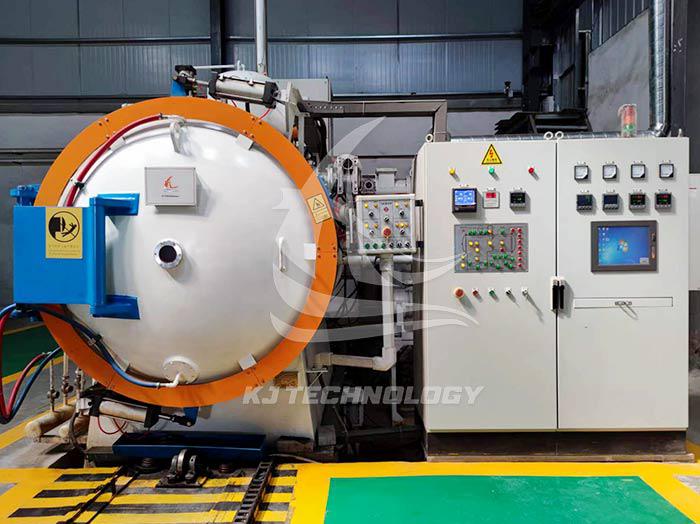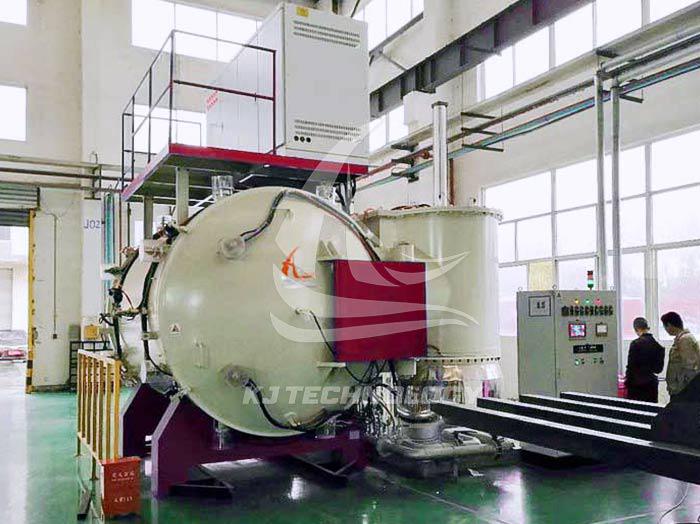What is the working principle of the silicon reaction sintering electric furnace?
 04-08-2025 Author: KJ technology
04-08-2025 Author: KJ technology
The working principle of silicon carbide reaction sintering electric furnace is mainly based on high-temperature heating and vacuum (or controllable atmosphere) environment. The following is a detailed explanation:
1. High temperature heating
Heating method:
Silicon carbide reaction sintering electric furnaces usually use electric heating methods, converting electrical energy into thermal energy through heating elements such as silicon carbon rods, silicon molybdenum rods, etc.
The heating element generates high temperature under the action of current, raising the temperature inside the furnace to the sintering temperature of silicon carbide material.
Temperature control:
The temperature inside the furnace is precisely controlled by a temperature control system to ensure that the temperature remains stable within the set range.
The temperature control system usually includes temperature sensors, temperature controllers, and actuators, which can monitor and adjust the temperature inside the furnace in real time.
2. Vacuum (or controlled atmosphere) environment
Vacuum environment:
During the sintering process, the silicon carbide reaction sintering electric furnace usually requires a high vacuum environment to avoid oxidation and pollution.
The vacuum system extracts gas from the furnace through a vacuum pump, creating a low-pressure environment and reducing the influence of gas molecules on the sintering process.
Controllable atmosphere:
In some cases, in order to control the sintering atmosphere or carry out specific chemical reactions, non reactive gases (such as nitrogen, argon, etc.) may be introduced into the furnace.
The atmosphere control system can accurately control the composition and pressure of the gas inside the furnace to meet the sintering requirements of different materials.
3. Sintering process
Loading and preheating:
Load the silicon carbide material to be sintered into the furnace and perform preheating treatment to remove moisture and impurities from the material.
sinter:
Under high temperature and vacuum (or controlled atmosphere) conditions, silicon carbide materials undergo chemical reactions and physical changes, gradually forming dense sintered bodies.
During the sintering process, the particles inside the material gradually fuse and grow, the porosity decreases, and the density and strength increase.
Cooling and removal from the furnace:
After sintering is completed, the temperature inside the furnace gradually decreases to room temperature, and the sintered body continues to undergo phase transformation and structural adjustment during the cooling process.
After cooling to room temperature, remove the sintered body from the furnace for subsequent processing and testing.








